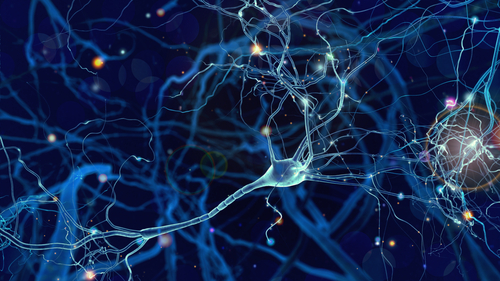Schwann Cells Stop Blood-clotting Protein Thrombin from Damaging Nerves, Study Finds

Schwann cells surrounding neurons protect the degeneration of nerves by blocking thrombin, a blood-clotting protein that can also damage nerves, according to a new study.
These findings may aid in the further understanding of genetic and molecular mechanisms behind conditions such as multiple sclerosis (MS).
Results of the study, “Glial cells maintain synapses by inhibiting an activity-dependent retrograde protease signal,” appeared in the journal PLOS Genetics.
Schwann cells are a type of non-neuronal cells that support and protect neurons in the peripheral nervous system by forming myelin sheaths, a fatty layer that insulates nerve axons. They also help to create synapses between neurons, which are gaps where chemical signals are transferred.
The absence of Schwann cells can lead to the degeneration of neurons, which, in turn, is related to conditions such as MS, amyotrophic lateral sclerosis (ALS), Alzheimer’s disease, and schizophrenia.
The study investigated the role of Schwann cells in nerve maintenance by examining the cell’s protective features in neuromuscular junctions, which are synapses between motor neurons and muscle fibers.
Researchers found that a mouse model with a mutated and dysfunctional variant of diaphragmic erbB3 — a gene required for Schwann cell development — showed degeneration of neuromuscular junction synapses and motor neurons (neurons associated with the motor-cortex, brainstem, or spinal cord) in the diaphragm.
Since earlier studies showed that repeated muscle stimulation increases the degeneration of motor neurons, the researchers next tested if the synaptic activity could contribute to degeneration. Disruption of acetylcholine — a muscle-contracting molecule released by nerve cells — in erbB3-mutated mice resulted in a higher number of nerve fibers than in mice with mutated erbB3 but with intact acetylcholine production.
They further found that acetylcholine triggers muscles to release a blood-clotting protein called thrombin that can damage nerves. They showed that Schwann cells can protect nerves and their synapses by releasing thrombin-inhibiting molecules.
“This study provides an understanding of the genetic and molecular pathways that alter synapse development and maintenance,” Kuo-Fen Lee, PhD, senior author of the study and a professor at the Salk Institute, said in a press release.
“We were surprised that Schwann cells maintain developing neuromuscular synapses indirectly by inhibiting negative factors released from active muscle. One of these factors is thrombin, best known for its role in forming blood clots,” said Thomas Gould, PhD, the study’s first author and an assistant professor at the University of Nevada Reno School of Medicine.
The team also evaluated the impact of thrombin on nerve degeneration in mice either lacking thrombin or with disrupted thrombin activity. These mice showed more intact nerve axons, suggesting that thrombin is indeed involved in nerve degeneration in the neuromuscular junctions.
“This is the first study to show that a molecule typically associated with blood clotting, thrombin, has a biological function outside of the liver system and plays an important role in nerve degeneration,” Lee said. “We further showed that Schwann cells can protect nerves against thrombin.”
According to the researcher, the new findings help to understand how synapses are created and maintained in normal conditions and in disease.
“The next step is to understand the mechanism of how thrombin and other enzymes destroy the synapse — with the eventual goal of creating an intervention for diseases — such as ALS, MS and Alzheimer’s — where thrombin accumulation or dysregulation has been implicated,” Lee concluded.






